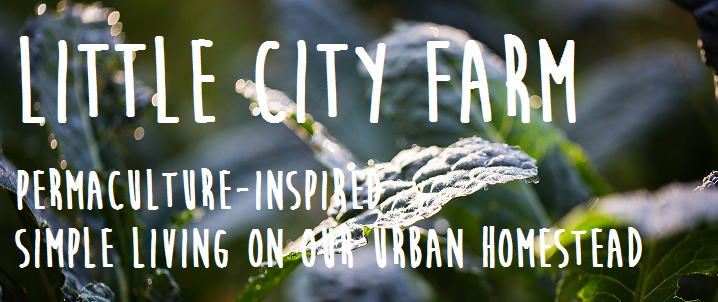
As urban homesteaders, with limited growing space on our own property, we can also include wildcrafting, and finding other edible resources or growing spaces that are available around the city to produce what we need. For example, we know of urban farmers who "rent" growing space from neighbours and friends, and produce enough food to feed themselves, run a small CSA, plus fill a market stall each week. They exchange fresh produce for the land to grow on. The possibilities of this are endless, as the city has vast amounts of unused growing space in it's rooftops, parks, private properties, residential front & backyards, school yards, vacant lots, church green space, etc.
Over the past few years we have also been sourcing out wild and forgotten fruit trees and berry bushes around the city. We've found treasures of wild raspberries, mulberries, saskatoon berries, grapes, plus endless pear, cherry and apple varieties with ripe fruit falling to the ground. We've been able to harvest only a small fraction at each location, and supply ourselves with jams, sauces, juice, chutney, wine (mmm, sour cherry wine) and fruit for eating.
Upon reading about Portland, Oregon's "Fruit Tree Project", and Victoria, BC's similar venture organized by "Life Cycles" - we decided we needed to do something likewise. The Fruit Tree Project is an amazing concept where local fruit trees (private and public) which are available for picking are registered on a city map. Volunteer harvesters get to collect 1/3 of what they pick; 1/3 is donated to the homeowner, and the remaining 1/3 goes to the local food bank. The group also hosts harvest parties, and canning/preserving workshops. An astounding concept, building community spirit, tapping into surplus underutilized food resources, providing healthy food to those who may not have access to it, and all for free! I would like to see a fruit tree map in every city. Very inspiring to say the least.
As Kitchener-Waterloo does not yet have a fruit tree map, we took it upon ourselves to put the word out another way and organize the first annual fruit tree project locally. We placed an ad in our local newspaper, saying "we'll pick your fruit - 1/3 goes to homeowner, 1/3 donated, and 1/3 to the volunteer harvesters". So far we've had one great response - a household which boasts cherry, apple and pear trees. We'll be heading over this week Thursday with our ladder and picking baskets, and look forward to what we will find.
Anyone local reading this who wants to join in the fruit harvesting, just send us an email!
Here's the link for the Portland "Fruit Tree Project":
http://www.growing-gardens.org/portland-gardening-resources/fruit-tree-project.php
Here's the link for the Life Cycles "Fruit Tree Project":
http://www.lifecyclesproject.ca/initiatives/fruit_tree/


